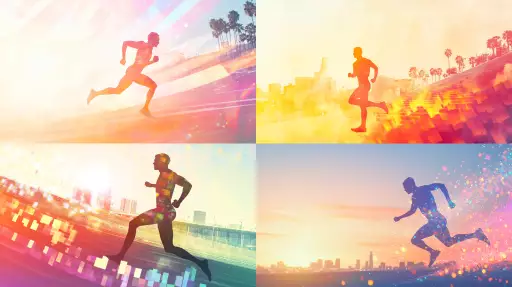Explore the Best AI Image Gallery

AI Art: A New Brushstroke on the Canvas of Creativity
The art world is experiencing a seismic shift with the emergence of AI-generated imagery. Algorithms are now capable of producing stunning visual creations, blurring the lines between human and machine creativity. This new frontier presents both exciting opportunities and complex challenges for artists, industries, and society as a whole.
A Revolution in Artistic Expression
AI art generators leverage sophisticated machine learning models trained on vast datasets of images. By analyzing patterns, styles, and compositions, these algorithms can generate original artwork in diverse genres, from photorealistic landscapes to abstract expressionism. This opens up new avenues for artistic exploration, allowing creators to experiment with novel concepts and push the boundaries of imagination.
Potential Uses Across Industries
The applications of AI-generated imagery extend far beyond the realm of fine art. Here are just a few examples:
- Advertising and Marketing: AI can create personalized visuals for targeted campaigns, generating unique images that resonate with specific demographics.
- Content Creation: Blog posts, articles, and social media platforms can benefit from AI-generated images to enhance visual storytelling and engage audiences.
- Design and Architecture: Architects and designers can utilize AI to explore innovative concepts, generate 3D models, and visualize their creations in realistic detail.
- Education and Research: AI art can be used to illustrate complex concepts, create interactive learning experiences, and aid in scientific research by visualizing data.
Navigating Ethical Considerations
While the potential of AI art is undeniable, it also raises important ethical concerns:
- Copyright and Ownership: Questions arise about who owns the copyright to AI-generated artwork – the creator of the algorithm, the user who provides input, or the AI itself?
- Bias and Representation: AI models are trained on existing data, which may contain biases that reflect societal prejudices. This can result in AI art perpetuating harmful stereotypes and lack of diversity.
- Job Displacement: There are concerns that AI art generation could automate creative tasks currently performed by human artists, leading to job losses in the creative industry.
Shaping the Future of Art
The integration of AI into art is still in its early stages, but it has the potential to fundamentally reshape the creative landscape. Open dialogue and collaboration between artists, technologists, ethicists, and policymakers will be crucial in navigating these challenges and ensuring that AI art serves as a tool for positive change:
- Encouraging Artistic Exploration: AI should be viewed as a collaborative partner, empowering artists to explore new creative avenues and push the boundaries of expression.
- Promoting Ethical Development: Developers and researchers must prioritize ethical considerations in the design and deployment of AI art systems, addressing issues of bias, transparency, and accountability.
- Fostering Interdisciplinary Collaboration: Breaking down silos between art and technology will lead to more innovative and impactful applications of AI in creative fields.
AI-generated imagery is a powerful new tool with the potential to revolutionize artistic expression. By embracing its possibilities while addressing ethical concerns, we can shape a future where AI and human creativity co-exist and thrive.

](https://images.ai-img.art/thumbnails/150/f67d9af3398150f2ab1bcf250717fea134275e2ca896252b54a4d9bb3719f9ac.webp)
](https://images.ai-img.art/thumbnails/150/008b5d5d49667cc2e93a5f8a8adfaa545963da99c39ff0901f5296294636400d.webp)





](https://images.ai-img.art/thumbnails/150/bddf3ae4a232290858389b933c866ad3be429ef2e25c23a9f4d7713ed6e44d0b.webp)









](https://images.ai-img.art/thumbnails/150/4289d1230b86a96c4d556636c3167bed0ef38f850826549517e4e45db4d87bf7.webp)






](https://images.ai-img.art/thumbnails/150/c2c9c48b38fae37f0a457b80b084ed01ba803810fc8f488c8f610c03abc74049.webp)











](https://images.ai-img.art/thumbnails/150/f9584153b4cddd8c9fab611dc10247549b275c59bc173251e37d0935874f9deb.webp)



